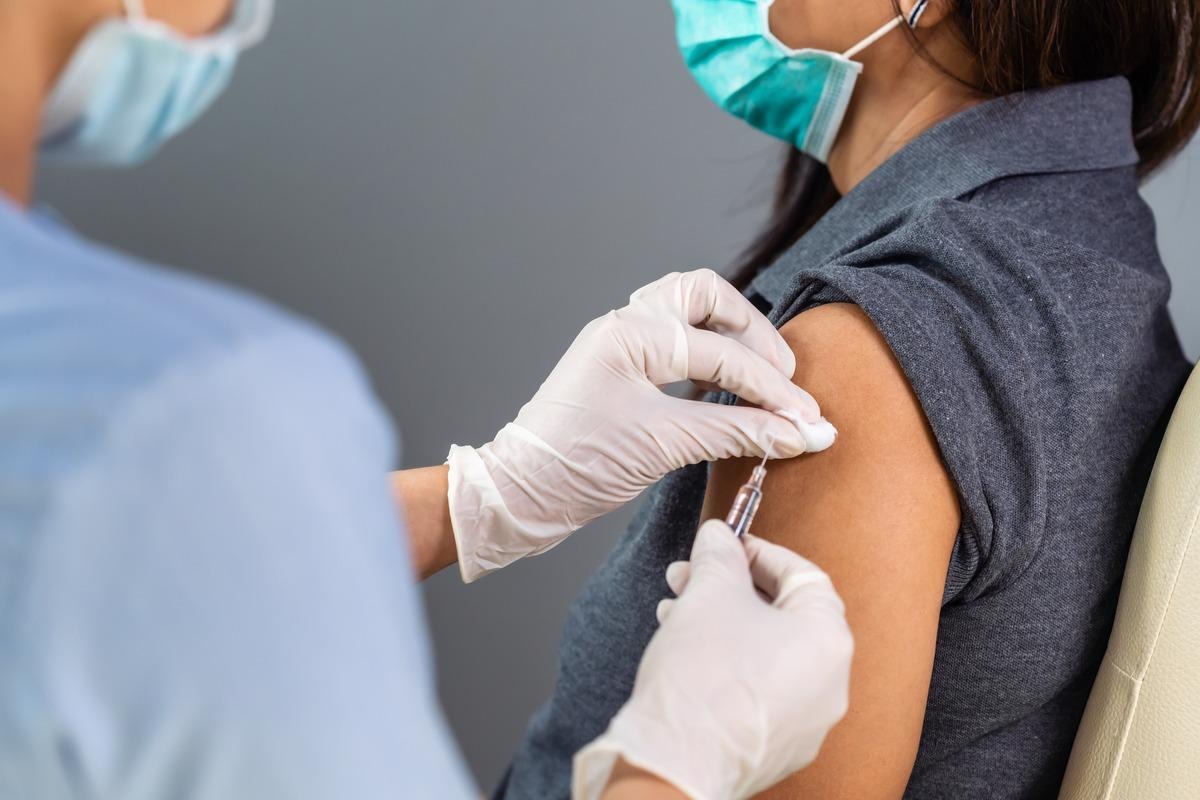In a recent study posted to medRxiv* preprint server, researchers reported that contact among vaccinated people could influence the effectiveness of coronavirus disease 2019 (COVID-19) vaccines.
 Study: Higher contact among vaccinated can be a mechanism for negative vaccine effectiveness. Image Credit: BaLL LunLa/Shutterstock
Study: Higher contact among vaccinated can be a mechanism for negative vaccine effectiveness. Image Credit: BaLL LunLa/Shutterstock

 This news article was a review of a preliminary scientific report that had not undergone peer-review at the time of publication. Since its initial publication, the scientific report has now been peer reviewed and accepted for publication in a Scientific Journal. Links to the preliminary and peer-reviewed reports are available in the Sources section at the bottom of this article. View Sources
This news article was a review of a preliminary scientific report that had not undergone peer-review at the time of publication. Since its initial publication, the scientific report has now been peer reviewed and accepted for publication in a Scientific Journal. Links to the preliminary and peer-reviewed reports are available in the Sources section at the bottom of this article. View Sources
Background
Early studies from the United Kingdom, Canada, and Denmark observed negative vaccine effectiveness (VEff) against the severe acute respiratory syndrome coronavirus-2 (SARS-CoV-2) Omicron variant. VEff is determined by comparing infection rates between vaccinated and non-vaccinated people.
A negative VEff reflects a higher infection rate among the vaccinated population than non-vaccinated people. It has been suggested that vaccines amplified the biological susceptibility, i.e., the virus evolved to spread rapidly among vaccinated subjects.
Nonetheless, VEff calculations are based on observational data and subject to bias(es) such as differential detection/testing and exposure between vaccinated and non-vaccinated individuals. Contact heterogeneity is the different levels of contact in a population; for instance, a higher contact between vaccinated people (vaccinated contact heterogeneity) due to vaccine mandates restricting some spaces for the vaccinated.
The study and findings
In the present study, researchers assessed whether higher contact among vaccinated individuals could result in negative VEff measurements and how this association is influenced by vaccine efficacy against infectiousness (VEI) or susceptibility (VES). VEs reflects the reduced probability of vaccinees contracting infection, and VEI indicates the decreased infectiousness of vaccinees if a breakthrough infection occurs.
The authors implemented a simple compartmental susceptible, infectious, recovered (SIR) transmission dynamics model assuming an all-or-nothing vaccine type. The SIR model consisted of intra-class contact rates of unvaccinated (cuu) and vaccinated people (cvv) and inter-class rates for vaccinated with unvaccinated persons (cvu) and unvaccinated with vaccinated individuals (cuv). Vaccination coverage of 75% was assumed in all simulations. Two types of contact scenarios were assessed: 1) homogeneous contact in which vaccinated and unvaccinated people have equal and random (proportionate) contacts and 2) heterogeneous contact in which vaccinated subjects have higher intra-class contact.
For the homogeneous contact scenario, they assumed six contacts per person a day defining cuv = cvv = 4.5 and cvu = cuu = 1.5. They presumed a 50% increase in contacts for heterogeneous contact settings than in homogeneous scenarios. The recovery rate was set to 1/10 and the transmission probability at 0.01, such that the basic reproduction number (R0) was six for non-vaccinated people. The baseline values for VES (0.5) and VEI (0.1) were adopted. Simulations were initiated by introducing one infected, vaccinated, and non-vaccinated person into the population. VEff for the time t was calculated as VEff (t) = 1 – relative risk (t). Sensitivity analysis was conducted by varying VES and VEt between 0.1 and 1 and increasing cvv to 100% from 4.5 to 9.
The researchers did not observe a negative for VEff for homogeneous contact scenarios. However, heterogeneous contact scenarios generated negative VEff, albeit only when vaccine efficacies were lower i.e., when VES = VEI = 0.1 and VEI = 0.5, VES = 0.1. A negative VEff was evident only during the epidemic growth but became positive when non-vaccinated susceptible individuals were lower than the combined proportion of susceptible-vaccinated and immune-vaccinated persons. VEI moderately influenced the minimum VEff, whereas VES and contact between vaccinated subjects strongly affected it. A strongly negative VEff (less than –1) was observed when VES was < 0.2 and cvv was 9. Although VEI was less influential on VEff, higher VEI (>0.92) levels did not produce negative VEff even when VES was lower (<0.1).
Conclusions
The present study showed that vaccinated contact heterogeneity, i.e., increased contact between vaccinated persons, could result in negative VEff, illustrating scenarios where vaccines could be non-beneficial. Vaccinated contact heterogeneity could negatively affect VEff measurements only when vaccine efficacies, particularly VES, were lower. The researchers observed that the efficacy of vaccines could mediate the effect of contact heterogeneity bias.
Moreover, negative VEff measurements were found only during the epidemic growth when the number of susceptible non-vaccinated people was lower than the susceptible vaccinated population.
In previous empirical studies, negative VEff always coincided with the growth stage of the SARS-CoV-2 Omicron epidemic. Further, other biases such as selection bias or higher infection-induced immunity among the non-vaccinated population could negatively influence VEff.
In conclusion, the researchers reported one plausible mechanism for negative VEff measurements despite the beneficial vaccines and how biases could be identified. Future works might be able to address other possible and potential biases resulting in negative VEff.

 This news article was a review of a preliminary scientific report that had not undergone peer-review at the time of publication. Since its initial publication, the scientific report has now been peer reviewed and accepted for publication in a Scientific Journal. Links to the preliminary and peer-reviewed reports are available in the Sources section at the bottom of this article. View Sources
This news article was a review of a preliminary scientific report that had not undergone peer-review at the time of publication. Since its initial publication, the scientific report has now been peer reviewed and accepted for publication in a Scientific Journal. Links to the preliminary and peer-reviewed reports are available in the Sources section at the bottom of this article. View Sources